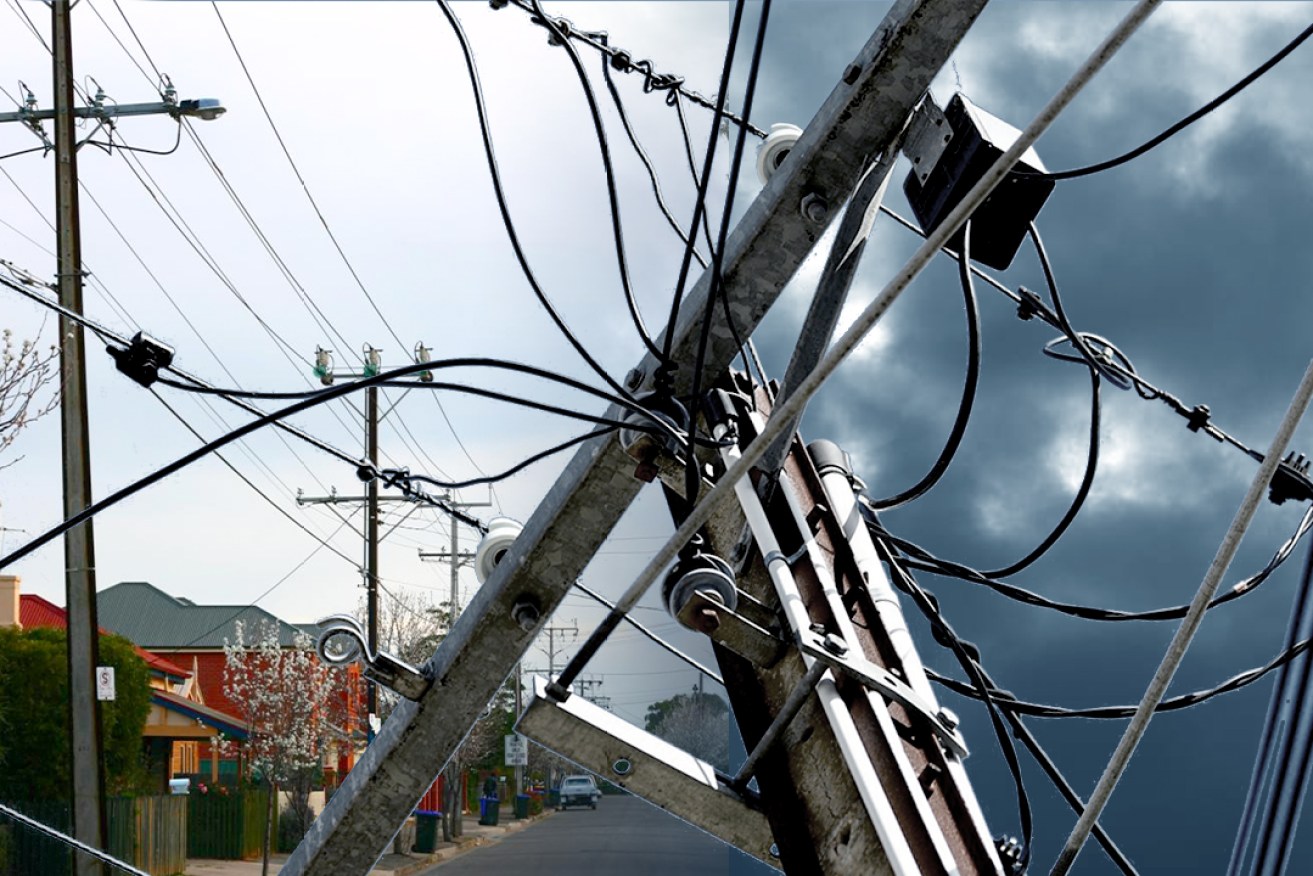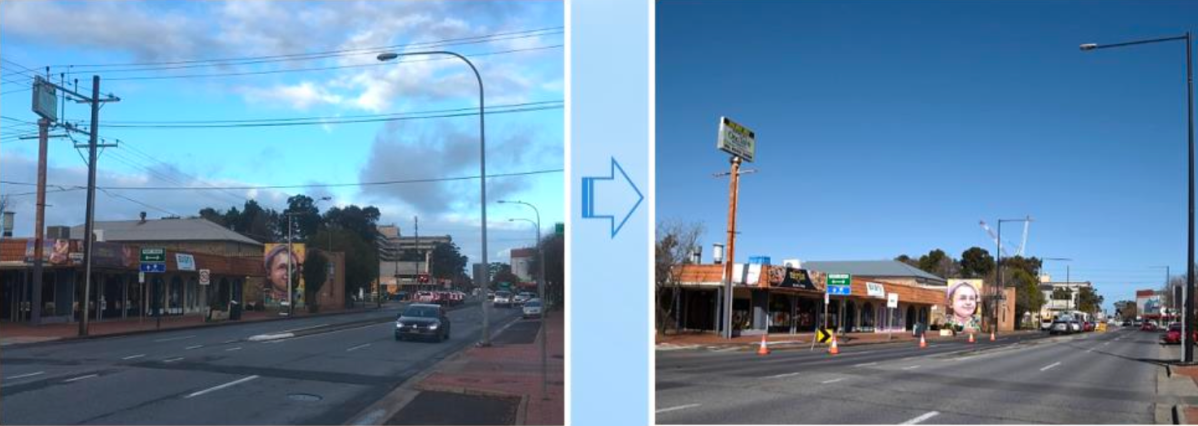Burying SA powerlines to cost ‘between $40 to $60 billion’
SA Power Networks says undergrounding all of South Australia’s overhead power lines would cost up to $60 billion and there are more cost-effective ways to increase bushfire safety and tree canopy.


Image: Tom Aldahn/InDaily
One of the many suggestions put forward to the parliamentary committee examining Adelaide’s urban tree canopy is to underground more overhead power lines to create more room for vegetation on streets and key urban corridors.
Around 80 per cent of South Australia’s electricity network (roughly 70,000km) is overhead, while 20,000km is underground, according to SA Power Networks (SAPN).
The utility provider submitted to the inquiry that the cost to underground all of South Australia’s remaining overhead power lines “would be between $40 to $60 billion”.
“That investment would need to be supported by the South Australian public and Australian Energy Regulator, as part of our regulatory reset proposal,” it said.
“We have other more cost-efficient strategies, the Regulator has not previously had an appetite to support any proposal for increased investment in undergrounding powerlines to improve reliability or for bushfire safety.
Given the focus on cost efficiency and customer/stakeholder feedback about the importance of ensuring energy affordability, the regulated cost/benefit analysis is the overwhelming barrier to adopting more extensive undergrounding programs.
SAPN, which is an overseas-owned private monopoly in South Australia, has been criticised during the committee process for its role in felling trees to make way for electricity infrastructure and has faced calls to rein in its legislative powers.
SAPN has argued that it is managing “generations of inappropriately-planted unsuitable trees around powerlines”, and claims councils continue to plant “large numbers of non-compliant” trees near electricity infrastructure.
The utility provider submitted that despite the hefty price tag of undergrounding, it would support an expansion of the state government’s Power Line Environment Committee (PLEC) – the primary mechanism for undergrounding power lines in South Australia.
The committee, which administers around $10m of annual funding provided by SAPN and the local government sector, meets once a month to review council proposals to underground sections of power lines in “strategic” locations.
The PLEC has funded 10 projects in 2022/23 to remove 4.6km of overhead powerlines and 137 poles, according to its most recent annual report.

A before and after of a power line undergrounding on Woodville Road, Woodville. Photos: PLEC
Over the last 20 years, 212km of overhead powerlines have been undergrounded through the PLEC process, according to the report.
Only one of the projects funded this financial year is in metropolitan Adelaide – a $1.1m undergrounding project for Commercial Road, Port Adelaide.
SAPN said it would support the state government increasing the PLEC’s funding.
“Undergrounding should be considered in certain areas, including high amenity and tourist areas or streetscapes, heritage and coastal areas, high bushfire risk areas and road safety hot spots,” it said.
“The PLEC has continued to enable SA Power Networks and other parties, such as Councils, to continually improve the aesthetics of local communities.
“SA Power Networks will continue to work with Councils on priority projects suitable for PLEC funding and would welcome a State Government decision to invest in strengthening that program.
“There may be some scope to consider the extent of the PLEC program given it has been in place for many years and has maintained a small budget of about $10 million per annum.”
SAPN also submitted that its “most cost effective approach” was to install conduits – tubing which protects electrical wires – to “facilitate potential undergrounding at a later stage”.
It has also previously argued that one of the downsides of undergrounding is it makes it harder for repair teams to identify electrical faults, leaving customers without power for longer when there are outages.
Labor MP Jayne Stinson, chair of the urban forest inquiry, said: “The challenges SAPN grapples with are real and important.”
“We’re looking forward to hearing evidence from SAPN and others on how we can strike a balance between the critical need to grow our urban canopy while meeting the demands of modern suburbs,” she told InDaily.
It’s a massive price tag to underground all existing powerlines. We’re keen to hear from parties about what’s practical and achievable.
“It’s too early to express a view on specific recommendations. We want to hear all the evidence first, but there’s some exciting work going on and we’re open-minded on the solutions.”
A spokesperson for the Local Government Asssociation of SA (LGA) said managing trees near powerlines “presents challenges, especially when communities are asking councils for more greening of their neighbourhoods”.
The LGA said undergrounding power lines “would provide more space in our streets to plant trees that mitigate the impacts of climate change, help stabilise the electricity grid during extreme weather events, and reduce bushfire risk”.
“We understand there is a significant cost to undergrounding powerlines, but if we’re serious about improving our tree canopies for better greening and cooling, particularly in our urban communities, then these are the discussions we need to have,” the spokesperson said.
“The LGA welcomes a conversation between SAPN, the State Government and local communities about how we can work together to do this.”
The parliamentary inquiry into the urban forest, being conducted by the Environment Resources and Development Committee, comes alongside two other examinations of South Australia’s tree policy.
The State Planning Commission is compiling a broader review of the state’s regulated and significant tree protections and expects to begin consultation this year on potential changes to tree regulations.
Meanwhile, an expert panel led by planning consultant John Stimson is in the final stages of compiling a wide-ranging review of South Australia’s planning system. Stimson has already indicated that trees topped the list of public concerns during consultation.




